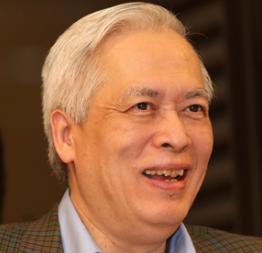
Giáo sư vật lý thiên văn học TS Trịnh Xuân Thuận
Trong bản thông báo của mình, Institut de France nói rõ là mục tiêu của Giải Thế giới Cino del Duca – trị giá 300.000 euro – là nhằm khen thưởng « một tác giả Pháp hoặc ngoại quốc mà công trình, dù thuộc lãnh vực văn học hay khoa học, hàm chứa một thông điệp của tinh thần nhân văn hiện đại. »
Chính trong tinh thần đó, mà Học viện Pháp Quốc đã « quyết định trao Giải Thế giới năm 2012 cho Giáo sư Trịnh Xuân Thuận, một nhà vật lý thiên văn và nhà văn, về công trình phổ biến khoa học của ông bằng tiếng Pháp, một ngôn ngữ mà bản thân ông rất trân trọng ».
Được các viện sĩ hàn lâm Pháp vinh danh
Nói rằng Giáo sư Trịnh Xuân Thuận được Pháp vinh danh không ngoa chút nào vì Institut de France là biểu tượng của tinh hoa, trí tuệ nước Pháp hiện nay, nơi tập hợp tất cả những nhân vật đầu đàn trong các lãnh vực, thường được mệnh danh là « Nghị viện của các nhà bác học » Pháp.
Được hình thành từ năm 1795, Institut de France bao gồm 5 viện hàn lâm khác nhau của Pháp. Nổi tiếng nhất và lâu đời nhất là Viện Hàn lâm Pháp – Académie française – thành lập năm 1635, tập hợp các viện sĩ xuất thân từ nhiều ngành. Kế đến là các viện chuyên biệt hơn : Viện Hàn lâm Văn chương – Académie des inscriptions et belles-lettres, thành lập năm 1663, hiện chuyên trách lãnh vực ngữ văn và lịch sử ; Viện Hàn lâm Khoa học – Académie des sciences, thành lập năm 1666 ; Viện Hàn lâm Khoa học Đạo đức và Chính trị – Académie des sciences morales et politiques, thành lập năm 1795 ; và Viện Hàn lâm Mỹ thuật – Académie des beaux-arts – thành lập năm 1816.
Nhiệm vụ chính của Institut de France là góp phần một cách vô vị lợi vào việc trau giồi và phát huy văn học, nghệ thuật và khoa học. Trong tinh thần đó, về mặt hành chánh, có rất nhiều Hiệp hội (Fondation) hoạt động trong khuôn khổ của Học viện Pháp Quốc, chuyên trao tặng các phần thưởng hay cấp phát các khoản tài trợ để phục vụ cho mục tiêu kể trên.
Việc tuyển chọn những người nhận các loại giải thưởng hay trợ cấp nói trên luôn luôn được thực hiện với sự cố vấn của Institut de France, do đó đã được bảo đảm về mặt chuyên môn, và giá trị luôn luôn được công nhận.
Trong trường hợp Giải Thưởng Thế giới Cino del Duca năm nay, Học viện Pháp Quốc cho biết là ban giám khảo gồm 14 viện sĩ hàn lâm, mà chủ tịch là bà Hélène Carrère d’Encausse, Thư ký Vĩnh viễn hiện nay của Viện Hàn lâm Pháp (Académie française). Các giám khảo còn lại gồm 7 thành viên Viện Hàn lâm Pháp, 3 thành viên Viện Hàn lâm Khoa học, 2 người thuộc Viện Hàn lâm Khoa học Đạo đức và Chính trị, và 1 người của Viện Hàn lâm Văn chương.
Sánh vai cùng những tên tuổi từ Sakharov, Havel cho đến Mario Vargas Llosa, Jorge Luis Borges
Về bản chất Giải thưởng Thế giới Cino del Duca là một giải văn học, vì mỗi năm Fondation Simone et Cino del Duca còn có riêng hai giải khác Giải Khoa học (Prix scientifique) và Giải Khảo cổ học (Prix d’archéologie).
Từ năm 2005 đến nay, tức là từ ngày Institut de France được Fondation Simone et Cino del Duca cho toàn quyền tuyển chọn người được trao giải Thế giới Cino del Duca, đây là lần đầu tiên mà định chế này quyết định tặng thưởng một nhà khoa học viết văn, chứ không phải là một nhà văn thuần túy.
Trong danh sách những người từng được trao Giải thưởng Thế giới Cino del Duca – từ khi giải này được thành lập năm 1970 – ngoài những tên tuổi trên văn đàn Pháp hay thế giới, còn có những nhân vật xuất chúng trong những địa hạt khác. Chẳng hạn như nhà nghiên cứu vật lý hạt nhân người Nga Andrei Sakharov – cha đẻ của quả bom khinh khí (bom H) của Liên Xô, nhưng cũng là một chiến sĩ đấu tranh cho nhân quyền tại nước này – được giải Cino del Duca năm 1974, và năm sau được trao tặng Nobel Hòa bình, hay là Vaclav Havel, tổng thống đầu tiên của Cộng hòa Séc, một nhà biên kịch tài ba, đồng tác giả của bản Hiến chương 77, biểu tượng của cuộc đấu tranh chống lại thể chế độc tài Tiệp Khắc. Vaclav Havel đã được trao giải Cino del Duca năm 1997.
Một số tên tuổi văn học lớn cũng đã được giải Cino del Duca vinh danh như nhà văn Tiệp Khắc Milan Kundera (2009), nhà văn Albanie Ismail Kadaré (1992), nhà văn Mêhicô Jorge Luis Borges (1980). Nổi bật trong số này là văn hào người Péru, Mario Vargas Llosa, đã được giải Cino del Duca năm 2008, và hai năm sau đó thì được giải Nobel Văn học (2010).
Trong bảng vàng giải thưởng Cino del Duca, Giáo sư Trịnh Xuân Thuận là người Việt đầu tiên, nhưng lại là người châu Á thứ hai. Trước ông, đã có giáo sư y khoa Trung Quốc Vương Chấn Nghị, được giải thưởng vào năm 1998.
Trịnh Xuân Thuận : tác giả Pháp ngữ
Sinh ra tại Hà Nội (Việt Nam) vào năm 1948, Giáo sư Thuận đã theo gia đình vào năm và theo học chương trình Pháp ở trường trung học Jean-Jacques Rousseau ở Sài Gòn (hiện đã đổi tên thành trường Lê Quý Đôn). Sau khi đậu bằng Tú tài (tức là tốt nghiệp phổ thông) năm 1966, ông qua Thụy Sĩ học kỹ sư ở Lausanne, nhưng chỉ một năm sau thì ông quyết định thực hiện ước mơ của mình: theo học ngành vật lý thiên văn tại Viện Công nghệ California, rồi tại đại học Princeton, tiểu bang New Jersey, cạnh New York.
Sau khi hoàn thành luận án tiến sĩ tại Princeton, ông bắt đầu giảng dạy ở Đại học Virginia từ năm 1976, và đã dần dần trở thành một chuyên gia nổi tiếng thế giới về ngành thiên văn học ngoài dải Ngân hà. Ông là người đã phát hiện ra thiên hà trẻ nhất được biết đến trong vũ trụ hiện nay, nhờ việc nghiên cứu các quan sát do kính viễn vọng không gian Hubble thực hiện. Đó là thiên hà I Zwicky 18.
Đối với quảng đại quần chúng, Giáo sư Trịnh Xuân Thuận được biết đến qua các công trình phổ cập kiến thức khoa học về vũ trụ viết bằng tiếng Pháp. Từ năm 1988 – tức là năm ra mắt quyển sách đầu tiên của ông với tựa đề La Mélodie secrète / Giai điệu bí ẩn – cho đến nay, Giáo sư Thuận đã cho ra mắt hơn một chục tác phẩm, mà quyển sau cùng là Le Cosmos et le Lotus / Vũ trụ và Hoa sen, xuất bản năm 2011, vừa được trao giải Louis Pauwels 2012.
Theo Học viện Pháp Quốc, các tác phẩm của ông thể hiện « một cái nhìn phức hợp và tinh tế của một nhà khoa học và một người có đức tin về vũ trụ và vị trí của con người trong vũ trụ », nhưng thông qua một ngôn ngữ dành cho một công chúng rộng rãi.
Nhận xét về công trình phổ cập khoa học của Giáo sư Trịnh Xuân Thuận, Institut de France ghi nhận là ông đã thành công xuất sắc trong việc : « Giúp quảng đại quần chúng thấy được tính chất huy hoàng gần như là siêu thực của vũ trụ bằng một ngôn ngữ đơn giản và dễ tiếp cận ».
Học viện Pháp Quốc cũng trân trọng mục tiêu mà Giáo sư Thuận đề ra là giúp người thường hiểu được những yếu tố « cao siêu và khó hiểu nhất » của thế giới quanh ta, thông qua những suy tư mang tính triết học và thần học. Theo Institut de France : « Nhờ tính độc đáo của công trình ông thực hiện, cũng như của sứ mệnh ông đề ra, Trịnh Xuân Thuận đã hướng tới những con người bình dị, ham hiểu biết nhưng không có kiến thức khoa học, sao cho lịch sử của vũ trụ trở nên dễ hiểu đối với với chúng ta, ‘hậu duệ của các vì sao’. »
Từ giải Kalinga (UNESCO) đến giải Cino del Duca (Institut de France)
Các nỗ lực phổ cập khoa học của Giáo sư Trịnh Xuân Thuận từng được thế giới tôn vinh với Giải thưởng Kalinga do tổ chức văn hóa, giáo dục Liên Hiệp Quốc UNESCO trao tặng vào năm 2009.
Một số tác phẩm của ông cũng đã được trao giải. Ngoài tác phẩm mới nhất – Le Cosmos et le lotus /Vũ trụ và Hoa sen (2011), được giải Louis Pauwels 2012, quyển Les Voies de la lumière : physique et métaphysique du Clair-Obscur / Những con đường của ánh sáng (2007) từng được Giải thưởng lớn Moron năm 2007 của Viện Hàn lâm Pháp (Grand Prix Moron de l’Académie Française).
Trước đó, công trình L’Infini dans la paume de la main: du Big Bang à l’Éveil / Cái vô hạn trong lòng bàn tay: Từ Big Bang đến giác ngộ (2000), cũng đoạt giải Văn học Châu Á 2000 (Prix Littéraire de l’Asie 2000) của Hiệp hội các Nhà văn Pháp ngữ (Association des Ecrivains de langue française).
Nhân dịp đến Pháp nhận Giải thưởng Thế giới Cino del Duca, Giáo sư Trịnh Xuân Thuận đã dành cho ban Việt ngữ RFI một bài phỏng vấn trong đó ông nói rõ thêm về ý nghĩa quan trọng của giải Cino del Duca của Institut de France đối với ông, về động lực thúc đẩy ông lao vào công việc phổ biến khoa học. Giáo sư Thuận cũng khuyên các bạn trẻ rèn luyện ý chí, theo đuổi đến nơi đến chốn con đường mình đã chọn.











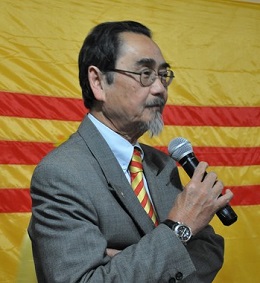






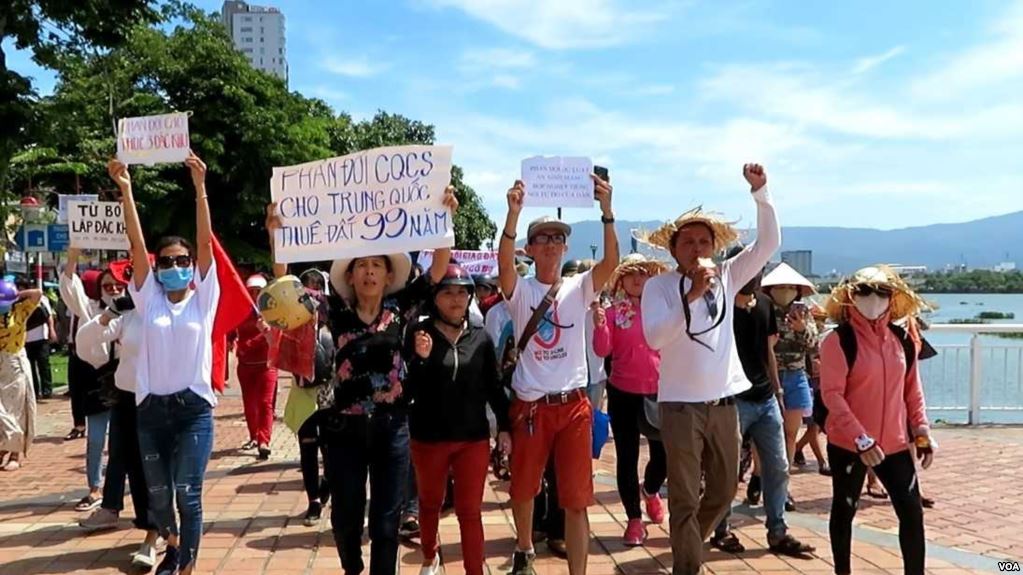

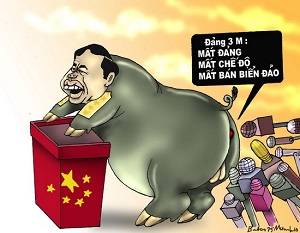

















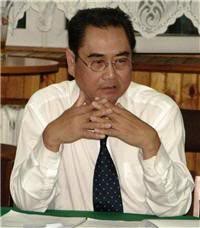


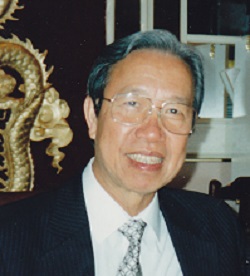
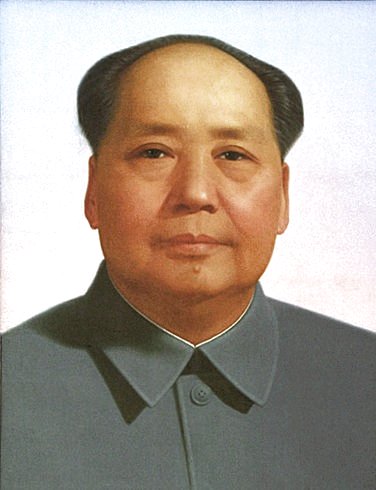
2 Comments
Thomas T. Nguyen
Bai viet’ chi tiec rat hay. Co’ mot. dieu toi thac mac’ la` TS Thuan la` thay^` day truong dai hoc thi dung` chuc*’ vi. Giang su* dung’ hon* la Giao’ su*. Cam on* nhieu^`.
Việt Thức
1. En français, on utilise aussi le mot “lecteur”, qui est le grade le plus bas dans la hiérarchie des enseignants universitaires, il se situe en-dessous de chargé de cours (cf. commentaire de Wildan).
Un lecteur est généralement un étudiant avancé qui, tout en poursuivant des études dans le pays où il est, enseigne aussi.
On parle donc généralement de “lecteur étranger” ou “lecteur invité”.
Ceci dit, un lecteur/une lectrice est un enseignant et donc … un professeur, mais il faut ici différencier la fonction (professeur/enseignant) du grade universitaire (professeur, professeur-adjoint, maître de conférence, chargé de cours, lecteur).
2. Professeur des universités
Pour les articles homonymes, voir Professeur.
Au sein du service public d’enseignement supérieur français actuel, les Professeurs des Universités constituent l’un des deux corps d’enseignants-chercheurs régis par le décret 84-431, l’autre corps étant celui des maîtres de conférences. Les professeurs des universités ont traditionnellement l’exclusivité du titre universitaire de « Professeur ». Ce sont des fonctionnaires appartenant1 à la catégorie A définie par l’article 29 de la loi 84-16 portant dispositions statutaires relatives à la fonction publique de l’État, et sont nommés par décret du président de la République.
L’accession à un poste de professeur des universités passe normalement, depuis 1984, soit par l’obtention de l’habilitation à diriger des recherches, l’inscription sur une liste de qualification et la candidature à un concours de recrutement par poste sur titres et travaux, soit par un concours dit « d’agrégation » (en sciences juridiques, économiques, politiques, et de gestion), la très grande majorité des professeurs des universités étant d’anciens maîtres de conférences. Au sein des enseignants-chercheurs relevant du décret 84-431, les professeurs des universités ont en effet le rang académique « supérieur », leur rémunération étant sensiblement plus élevée, sans que n’existe de supériorité hiérarchique vis-à-vis des maîtres de conférences. En termes de fonctions, les professeurs des universités ont vocation prioritaire, mais non exclusive, à assurer leur service d’enseignement sous forme de cours magistraux ainsi que la direction des unités de recherche2. Ils ont, « dans les enseignements auxquels ils participent, la responsabilité principale de la préparation des programmes, de l’orientation des étudiants, de la coordination des équipes pédagogiques »1 et « assurent la direction des travaux de recherche menés dans l’établissement, concurremment avec les autres enseignants ou chercheurs habilités à diriger ces travaux. »1. Quelques fonctions leurs sont en outre exclusivement réservées, telles que les présidences de jury de doctorat et d’habilitation à diriger des recherches, les présidences de certains conseils, comités ou commissions. Les professeurs des universités sont eux-mêmes divisés en trois grades : professeurs de deuxième classe, professeurs de première classe et professeurs de classe exceptionnelle. Hormis la rémunération, allant du simple au double, il n’existe aucune attribution réglementaire particulière à un grade donné.
Les professeurs des universités jouissent du principe constitutionnel de « représentation propre et authentique », en particulier au sein des conseils universitaires, et l’ensemble des opérations de recrutement et de promotions des professeurs des universités relèvent exclusivement des membres du corps des professeurs des universités et des personnels assimilés3.
Le corps unique des professeurs des universités a été créé en 1979 par fusion, d’une part, des corps de maîtres de conférences des disciplines littéraires, de sciences humaines et scientifiques, de maîtres de conférences des sciences juridiques, politiques, économiques et de gestions et de maîtres de conférences des disciplines pharmaceutiques (incluant les professeurs sans chaire) , devenant le grade de professeurs des universités de deuxième classe, et, d’autre part, des professeurs titulaires de chaires et titulaires à titre personnel, devenant les grades de professeurs des universités de première classe et de classe exceptionnelle. Les statuts des professeurs des universités, et des autres enseignants de statut universitaire, ont été ensuite profondément modifiés en 1984, en particulier au niveau des services horaires d’enseignement et des relations hiérarchiques.
3. Instructor is a generic term for anyone who teaches college or it may be an actual rank. The most important thing to a professor’s rank is rather they are tenure track (permanent) or non-tenure track (a temporary appointment).
Non-tenure track are usually called lecturer (full-time) or adjunct professor (part-time).
Tenure track is
Instructor (not all universities have this rank)
Assistant Professor
Associate Professor
Professor
Distinguished Professor (not all universities have this rank)
Many college professors will never reach the level of Professor (most reach associate professor).
The rank are an honor and may have no real meaning (An assistant professor of Accounting may get paid more than a Professor of English).
4. A professor is a scholarly teacher; the precise meaning of the term varies by country. Literally, professor derives from Latin as a “person who professes” being usually an expert in arts or sciences, a teacher of high rank.[1] In much of the world, including most Commonwealth nations (such as the United Kingdom) and northern Europe professor is reserved only for the most senior academics at a university, typically a department chair, or an awarded chair specifically bestowed recognizing an individual at a university. A Professor is a highly accomplished and recognized academic, and the title is awarded only after decades of scholarly work. In the United States and Canada the title of professor is granted to all scholars with Doctorate degrees (typically Ph.D.s) who teach in two- and four-year colleges and universities, and is used in the titles Assistant Professor and Associate Professor, which are not considered Professor-level positions elsewhere, as well as for Full Professors.
In countries on the northern European mainland, such as The Netherlands and the Scandinavian countries, usage of professor as a legal title is limited much the same way as in most Commonwealth countries, that is, it is reserved for someone who holds a chair. In the United States, “Professor” as a proper noun generally implies a person with a Ph.D. who holds permanent position at the college or university level, regardless of rank.
In Portugal, France, Romania and Latin America (Spanish- and Portuguese-speaking), the term professor (profesor / professor / professeur / profesor) is used for anyone teaching at a school, institute, technical school, vocational school, college, or university, regardless of the level of the subject matter taught or the level or ages of students. This includes instructors at the grade/elementary school, middle school, and high school levels. However, when the professor teaches at a university, they are specifically called a “university professor”; if holding a chair, then catedrático is used in Spanish. It is common to call university professors just “profesor” (Spanish) or “professor” (Portuguese).
In Italy, primary school teachers are called “maestro”(m) or “maestra”(f). Teachers in secondary schools scuole secondarie are called “professore”(m) or “professoressa”(f); the same title is used for university professors.
In Spain, the term professor (Basque, Galician and Spanish: (m) profesor, (f) profesora; Aranese and Catalan: (m) professor, (f) professora) is used for higher-level teachers at the secondary education level (high school, lyceum, institute, etc.) and above (i.e. institute, technical school, vocational school, college, or university). Instructors at the primary or elementary school level are called teachers (Aranese: (m) mèstre, (f) mèstra; Basque: (m) maisu, (f) maistra; Catalan and Galician: (m) mestre, (f) mestra; Spanish: (m) maestro, (f) maestra). When the professor teaches at a university, they are specifically called a “university professor”; if holding a chair, then chair (Aranese: catedratic; Basque: katedraduna; Catalan: catedràtic; Galician and Spanish: catedrático) is used. In Spain, it is not common to call university professors just “professor”.
In Poland, the term profesor means professor extraordinarius and professor ordinarius at colleges and universities, and anyone who teaches at a (Polish) high school (grades 10-12).
Beyond holding the proper academic title, universities in many countries also append famous artists, athletes and foreign dignitaries with the title honorary professor, even if these persons don’t have the academic qualifications typically necessary for professorship. However, such “professors” usually do not undertake academic work for the granting institution.
5. I’m sure you will get several responses, which may differ from mine. Here is my two cents. I have been a lecturer, instructor, and a visiting professor, and I’m currently a tenure-track assistant professor. The reason these things have different names is because the human-resources department uses them as different catagories with regard to pay and benefits. They aren’t just semantically different.
At community colleges, virtually everyone is called an instructor, so I am assumeing you are talking about positions at four-year or graduate colleges/universities. In this context, an instructor is usually someone hired on a semester or yearly contract, often for many years. Often they have a Ph.D.; sometimes, at some schools, they may hold an M.A.
It is often a title given to people who have been teaching in a department for many years (they may have started back when Ph.D.’s were not held by everyone), are great teachers and valuable to the department, but lack the credentials necessary to get a tenure-track job in present times. The title might also go to a J.D. who teaches in a law school, but doesn’t have an academic background, etc. It is also a title given to teachers on contract who are A.B.D.’s, or to new Ph.D.’s who need a job while they look for a more suitable position.
The instructor catagory usually comes with benefits but a lower salary. For example, instructors at my school might make $30,000 – $35,000 on a contract, while new Ph.D.’s are hired at $40,000 – $42,000.
Being an instructor is usually much better than being an adjunct. In my department, adjuncts earn $2,500 – $3,000 per class, while an instructor with a three-course teaching load gets $35,000. However, while instructors certainly have a shot at the tenure track, the title is usually reserved for people who teach courses with high enrollments. Departments that have not been granted new lines for the foreseeable future, will often use longterm contract employees.
A visiting assistant professor is different. A major search is usually conducted for a visiting assistant professor; it’s not simply a matter of making a phone call to local universities to see if any recent grads need a job. A visiting assistant professor is someone a department might hire to be a tenure-track professor if only the department was in the market for one. Such people are usually brought in to teach when another professor is on sabbatical or has left and a new person has not yet been hired. The visiting assistant professor is hired to fill in.
In my opinion, a visiting position is much better than an instructor position, and not just because it pays more. Another reason is that it’s more likely to lead to a tenure-track job. When you apply for tenure-track jobs from a visiting position, you already have a seal of approval in a way. A complete search has been done and you have been judged by some committee, at some school, as worthy. This makes the prospective colleague feel a bit more secure about your abilities. Second, many people, myself included, have gotten tenure-track job positions out of visiting-assistant-professor positions. A visiting position really can turn permanent; your job might become permanent, for example, if the person who is on sabbatical doesn’t come back or if the institution likes the job you do while you’re filling in during a job search.
The job of a visiting assistant professor also seems a lot nicer: You might be asked to teach upper-level or graduate seminars in your specialty (an option not usually open to instructors and adjuncts), since the department sees an opportunity for students to get fresh courses in something not usually offered. Also, departments are usually not interested in the research, publications, etc. of an Instructor or adjunct — they might think nice, but who cares — while as a visiting prof you might be asked to give talks and participate in all kinds of seminars and events that most Instructors are not invited to.
When I first went on the market, my own committee and major professors advised me to go for the visiting-assistant-professor position; they had all had similar positions for a year or two before getting their jobs at Research I schools like mine. They told me the visiting position had better pay and more prestige. In my experience this turned out to be true.